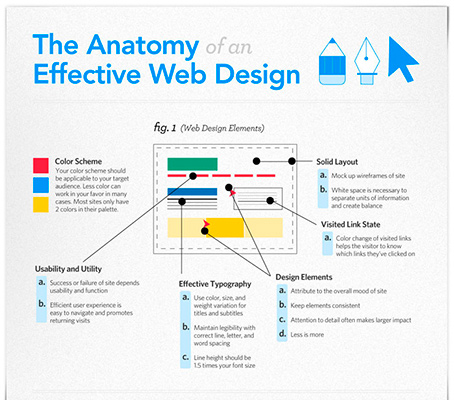Fascinated In Finding Out Exactly How Site Design Has Advanced Throughout The Years? Discover The Trip From Standard, Straightforward Styles To User-Centric User Interfaces That Prioritize The Visitor'S Experience
Fascinated In Finding Out Exactly How Site Design Has Advanced Throughout The Years? Discover The Trip From Standard, Straightforward Styles To User-Centric User Interfaces That Prioritize The Visitor'S Experience
Blog Article
Personnel Author-Monroe Cantu
In the past, web sites were easy and concentrated on information. Navigating was direct, and layout was for desktops. Currently, user experience is crucial. Data guides layouts for easy navigation. Responsive layouts fit different gadgets. Today, dark mode reduces pressure, and minimal food selections boost navigating. Interactive features involve individuals, and vibrant visuals stick out. AI combination increases interaction. See just how layout has progressed to boost your online trip.
Very Early Days of Website Design
In the very early days of website design, simpleness reigned supreme. Sites were basic, with restricted shades, fonts, and layouts. The focus was on providing info as opposed to showy visuals. Users accessed the net via slow dial-up links, so speed and performance were key.
Navigating food selections were straightforward, typically situated at the top or side of the web page. Internet sites were designed for computer, as mobile browsing had not been yet widespread. Web content was king, and designers focused on very easy readability over intricate design aspects.
HTML was the key coding language used, and designers had to function within its constraints. Animations and interactive attributes were very little compared to today's standards. Web sites were static, with little vibrant material or customized customer experiences.
Increase of User-Focused Design
With the development of internet site design, a shift in the direction of user-focused style principles has come to be significantly noticeable. Today, creating sites that prioritize individual experience is important for engaging visitors and accomplishing organization goals. User-focused design includes comprehending the requirements, preferences, and actions of your target audience to customize the web site's layout, material, and includes appropriately.
Designers currently conduct comprehensive study, such as customer studies and usability testing, to gather insights and comments straight from individuals. This data-driven method assists in producing user-friendly navigation, clear calls-to-action, and aesthetically appealing interfaces that reverberate with visitors. By positioning the user at the facility of the layout process, websites can supply a much more customized and delightful experience.
https://docs.google.com/spreadsheets/d/1xIC5TDhKsyxRuqrbHdrHe9HGI-SL6TsilxT4Pi65wW4/edit#gid=1301677572 has actually likewise emerged as a vital element of user-focused style, ensuring that web sites are optimized for numerous tools and screen dimensions. This flexibility enhances availability and use, accommodating the diverse methods individuals interact with web sites today. Fundamentally, the increase of user-focused layout signifies a change towards producing digital experiences that focus on the demands and assumptions of the end customer.
Modern Trends in Website Design
Check out the current patterns forming web design today. One popular trend is dark mode design, using a sleek and modern look while decreasing eye stress in low-light atmospheres. An additional key fad is minimal navigation, streamlining menus and boosting user experience by concentrating on essential elements. Integrating micro-interactions, such as animated switches or scrolling effects, can create a much more engaging and interactive web site. Responsive layout continues to be crucial, making sure smooth customer experiences across different gadgets. In addition, utilizing bold typography and asymmetrical designs can include aesthetic interest and draw attention to particular material.
Incorporating AI modern technology, like chatbots for consumer support or personalized referrals, enhances customer engagement and enhances processes. Accessibility has likewise become a substantial trend, with developers focusing on comprehensive style practices to accommodate varied individual demands. Accepting sustainability by optimizing internet site efficiency for rate and effectiveness is one more arising fad in web design. Collaborating with individual feedback and information analytics to repeat and improve style constantly is crucial for staying appropriate in the ever-evolving digital landscape. By accepting these modern-day trends, you can create an aesthetically appealing, straightforward web site that resonates with your target market.
web design company near me
As you review the advancement of site design from the early days to currently, you can see exactly how user-focused layout has come to be the driving force behind modern-day patterns.
Embrace the trip of modification and adaptation in web design, constantly maintaining the user experience at the forefront.
Remain existing with the latest trends and technologies, and never ever quit evolving your method to create aesthetically sensational and user-friendly sites.
Advance, adapt, and develop - the future of web design is in your hands.
